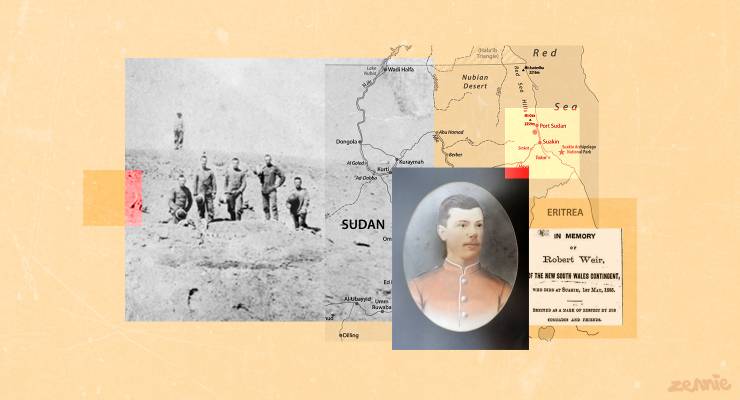
When David Elliott became NSW minister for veterans, one of his first major promises was to repatriate the remains of an Australian soldier who died abroad.
But a Crikey investigation reveals Elliott, who retires from politics on Saturday, has done nothing at all to achieve this “top priority” — and that any attempts would likely have caused confusion and offence. Internal emails unearthed by Crikey also reveal some government officials raised doubts about whether the soldier in question deserves to be called the first Australian serviceman to die abroad, as Elliott and others have claimed.

The idea to repatriate the remains of Private Robert Weir, a Kiama local who died while on duty in Sudan in 1885, was floated in a December 2021 Daily Telegraph article headlined “David Elliott’s top priority as new Veterans Affairs Minister”.
The freshly appointed Elliott said he would seek to establish a new war cemetery, modelled after the US Arlington Cemetery, as “a contemporary sacred site” to commemorate veterans, including those who have died by suicide after their service.
“It’s all very well to go and pay your respects to a loved one’s grave at an overseas Commonwealth War Grave but if your loved one comes home and suicides from PTSD 10 years later, the family should also be given the appropriate sacred place … This is something a lot of veterans and their families have been seeking as it will assist in giving closure to contemporary veterans who have sadly passed away,” Elliott told the newspaper.
Elliott said the cemetery would be named after Weir.
“Mr Weir’s body remains in The Sudan and I will also ask for the Commonwealth to repatriate him with full military honours,” he said at the time.
‘This is our heritage’
While Elliott did write twice to his counterparts in Canberra to propose the new cemetery, questions to Elliott’s office and freedom of information requests indicate the minister never got around to enquiring about Weir.
A FOI request to the federal Veterans’ Affairs Department revealed there have been no new documents created or correspondence received relating to Weir in the past eight years.
Another request, to the Australian War Memorial for any Weir-related correspondence since Elliott took over as minister for veterans, yielded no results at all.
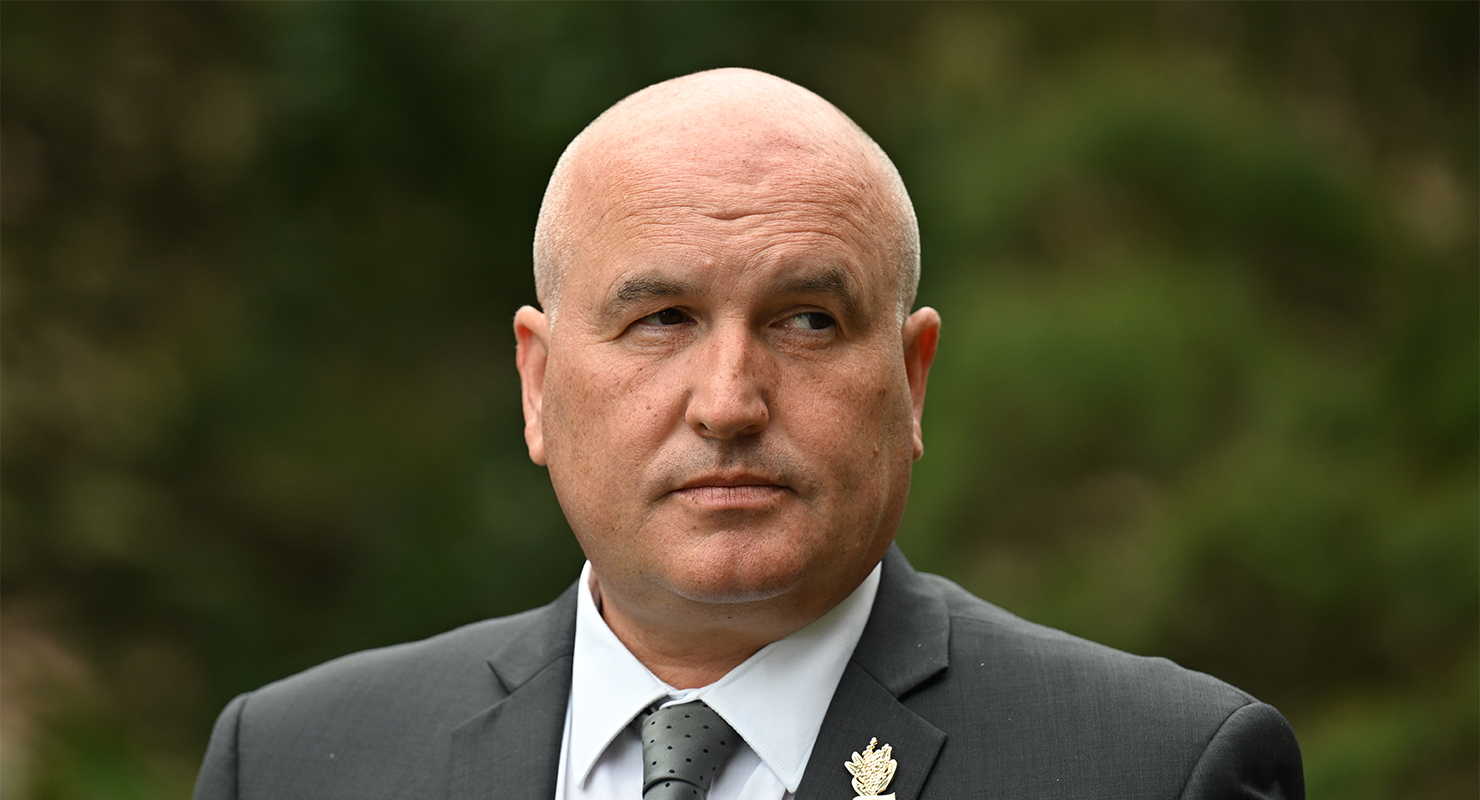
Even if Elliott had followed through on his plans to seek the repatriation of Weir’s remains, interviews with locals and experts, and new documents unearthed by Crikey, indicate that the project would have been both complicated and controversial.
Heritage expert and University of Cambridge archeology lecturer Shadia Taha said the idea was “offensive”.
“This is our heritage, and it’s important so we can remember what happened in this period,” Taha, who authored a book on the history of the Sudanese city of Suakin, told Crikey.
“This is colonial heritage and it should never be transported back.
“Is Australia trying to repatriate remains of soldiers who died in wars in Europe? If the minister has a selective interest in repatriating one soldier from a formerly colonised country, it feels patronising.”
A UK architect who has co-directed a project with Sudan’s National Corporation for Antiquities and Museums to protect and restore the historical city of Suakin said that, in his view, the idea to repatriate the body was misguided.
“You have to bear in mind, any attempt to take away, for whatever reason, a historical artifact comes across as colonial, and it might be wiser for Australia to ask Sudan if it would be interested in talking about how its mutual shared heritage is looked after,” the architect, Michael Mallinson, told Crikey.
“There could be an opportunity for Sudan and Australia to connect. There is a lot of shared history between Sudan and Australia which I think your minister would be surprised to discover.”
Crikey has been in touch with officials in Sudan who declined to comment.
NSW troops motivated by imperial loyalty
The war Weir was sent to fight in had begun as a conflict between the Khedivate of Egypt — governed as an Ottoman vassal state that claimed control over Sudan as well — and a Sudanese rebel leader named Muhammad Ahmad, who led a religious and nationalist uprising dubbed the Mahdist War that lasted from 1881 to 1899.
In 1882, the United Kingdom invaded Egypt in a move designed to protect British control over the Suez Canal.
British colonial officials already exerted de facto control over state finances in Egypt, which owed London large sums of money. The United Kingdom soon involved itself in the Mahdist War as well.

When the NSW troops arrived in 1885, as part of what the British called the Suakin Expedition, it was after the indigenous Mahdists had crushed the Egyptian-British forces in several decisive battles.
A failed attempt by a British general named Charles Gordon to turn the tide of the war led to him being killed in Khartoum. His death inspired some British colonies, including in modern-day Canada and Australia, to offer to send volunteer troops to Sudan.
Historian and UNSW Canberra Honorary Professor Peter Stanley, who edited a 1985 anthology on the NSW contingent, said the NSW troops saw “basically no action” in the two months they were there.
“They only marched out from Suakin once, and were fired at from a very long range, but no one was killed [in action],” Stanley said.
“The NSW involvement in the war was purely symbolic, and just to demonstrate the colony’s loyalty to the British empire.”
According to the Australian War Memorial, NSW was so keen to compete with a Canadian offer of volunteer troops that it proposed paying for its contingent’s expenses.
“London accepted but stipulated that the contingent would be under British command,” an article on the War Memorial website says.
Weir had only been in Sudan for a month when he died of dysentery aboard a hospital ship off the coast of Suakin on 1 May 1885.
A contemporary newspaper report quoted a comrade of Weir’s saying the 22-year-old had been “worn to a skeleton” by the disease but that he had “been hopeful of himself up to the day before his death, when he became delirious and never regained full consciousness”.
His burial on the outskirts of Suakin was covered at the time in a report in the newspaper Kerang Times and Swan Hill Gazette.
“He was buried this evening at Suakin. The guards were present, and fired a salute at the funeral,” the newspaper’s correspondent reported.
A grainy black-and-white photograph from Weir’s funeral shows five soldiers standing on rocky ground with their hats in their hands.
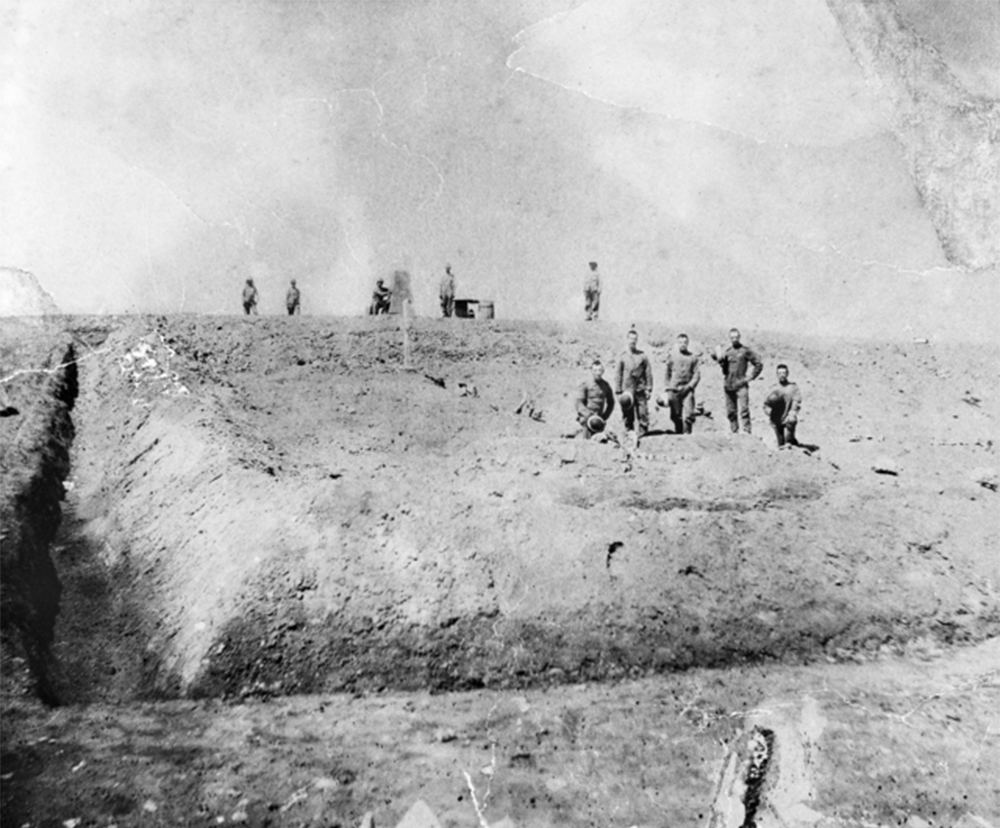
Weir’s status in doubt
Weir has been described as the first Australian to die on active duty overseas, although that status is disputed.
While Weir was attached to a contingent sent by the colony of NSW, Australian federation did not happen for decades after his death.
Emails released to Crikey show Veterans’ Affairs staff grappling with this issue in 2009, after media comments by then prime minister Kevin Rudd about Gallipoli had prompted “amateur historians” to write to the department to complain about the lack of recognition for Weir.
“We should be careful of trying to find the first Australian killed in overseas service because of the fact … that Australia did not exist as a national entity at the time,” one public servant wrote.
Another noted “there were probably four Victorians killed in the Maori Wars in NZ [in 1863]”.
“However, these men were not members of a colonial contingent, whereas Weir was,” the person wrote.
“The question of ‘the first Australian’ could be a vexed one!”
Preserving Weir’s tomb

Mallinson, who has written to the federal Australian government more than once in the past 15 years asking for help in funding a restoration of the grave, said the original monument at Weir’s tomb consisted of a concrete slab with a four-foot obelisk on top, with a metal railing around it.
Those features are visible in a picture of the grave published in 1935 by The Sydney Morning Herald. The story said another Australian soldier who died of illness during the Suakin expedition, Edward Lewis, was also buried there.
However, Mallinson said that in the decades since, weather and wind have eroded most of the monument.
A picture of the grave snapped by Mallinson in 2002 shows the obelisk and railing have disappeared, and only the base of the monument is still visible.
The gravesite was described by an Office of Australian War Graves official in 2014 as located in an area “not safe to travel to”.
“Our travel advice currently advises against travel to any part of Sudan outside Khartoum. Suakin is about 50kms [south] of Port Sudan, which itself is over 800kms or a plane ride from Khartoum,” the official wrote in an email obtained by Crikey.
“The grave is in poor condition and the Commonwealth War Graves Commission [CWGC], although willing, considered it unsafe to visit the site to assess and deliver any works required.”
An email to a constituent sent by then veterans’ affairs minister Alan Griffin in 2009 said he had inquired with the CWGC “whether it might be possible for the commission to include the grave in Suakin in their maintenance responsibilities in North Africa”.
“Unfortunately, the CWGC has recently advised that, due to the location of the grave, this is not possible,” Griffin wrote.
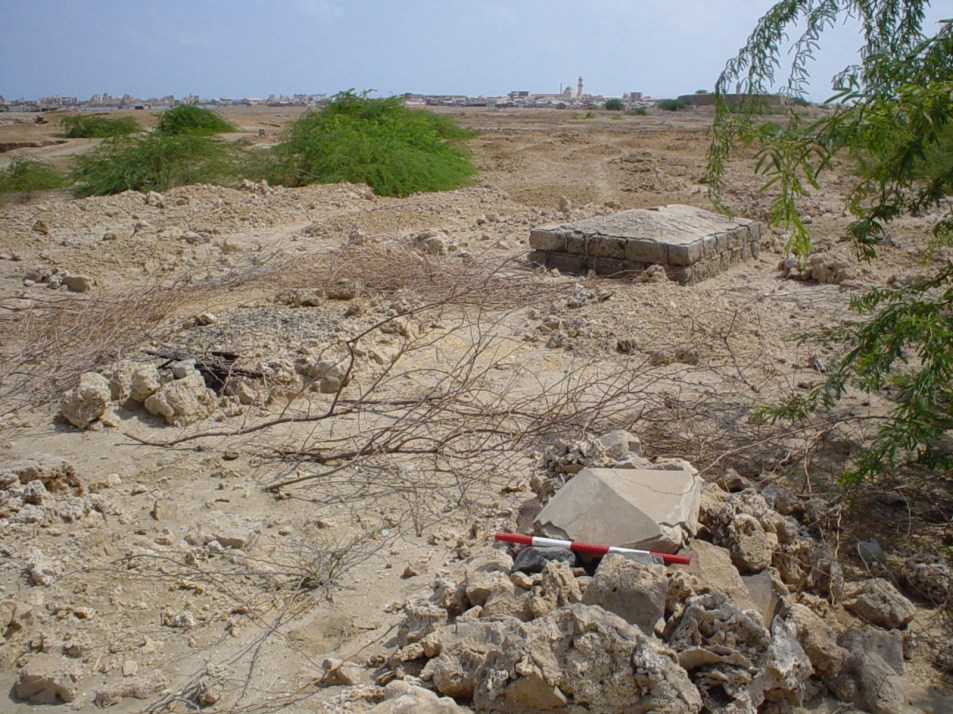
The rise and fall of Suakin
By 1898, the European scramble to colonise Africa had prompted a renewed British push to defeat the Mahdists. At a battle near the modern city of Omdurman late that year, British troops armed with machine guns killed an estimated 12,000 Sudanese troops.
The war ended the following year, and afterwards the United Kingdom continued to occupy Sudan for more than half a century.
Suakin, which was once Sudan’s most prominent port on the Red Sea coast and which was renowned for its historical centre with many buildings made of coral, declined towards the beginning of the 20th century when the British built a new port further north, named Port Sudan.
Taha, who explored the Suakin community’s attachment to its “abandoned heritage” in her 2013 doctoral thesis, said the British purposely sought to depopulate Suakin in favour of Port Sudan.
“Beginning in 1909 the British wanted all the merchants in Suakin to move to Port Sudan, but some of the Suakin locals didn’t want to move,” she said.
“Suakin had its own schools, bank, all the services, but in the 1920s the British started closing them little by little, forcing them to move.”
In 1952, a revolution in Egypt set the stage for Sudanese independence, which was declared in 1956.
Following independence, Sudan experienced decades of civil war between the mostly Christian south and the Muslim central government in the north, before the country was split in two in 2011.
In October 2021, the Sudanese government was toppled in a military coup, and Australian government advice says the country remains in a “volatile” political situation.
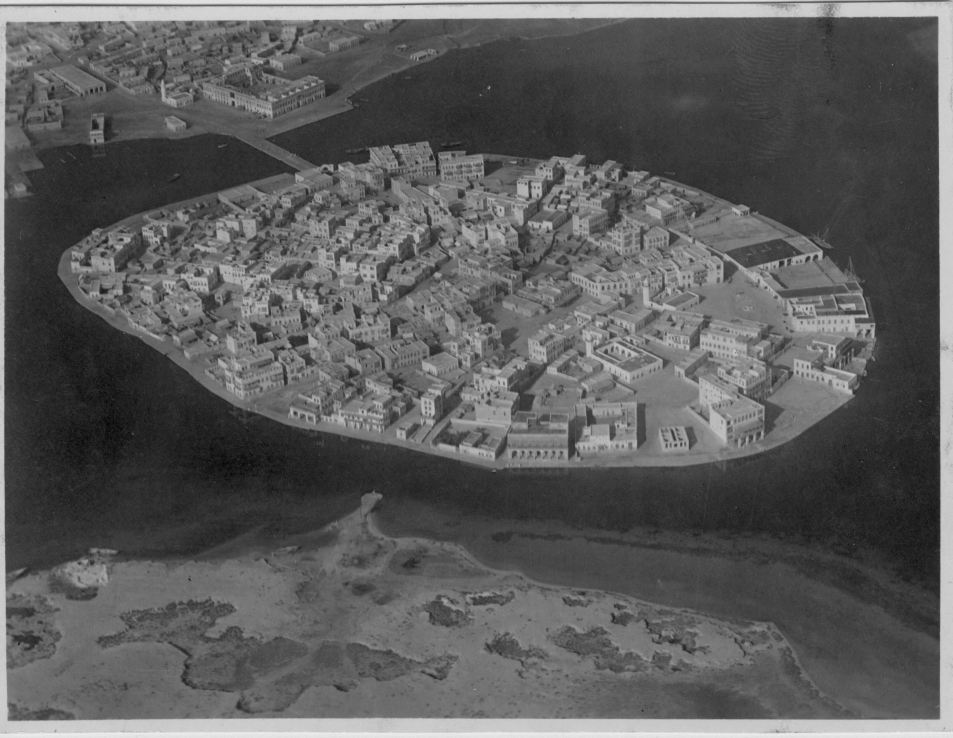
Modern Suakin is home to about 40,000 people, according to 2008 census figures. Former Sudanese leader Omar al-Bashir signed a 99-year lease with Turkey in 2017 to restore Suakin’s coral splendour.
Turkish President Recep Tayyip Erdoğan reportedly pushed for the deal after discovering with “sadness” that the historical city, which was once part of the Ottoman Empire, lay in ruins.
However, other regional powers, including Saudi Arabia and Egypt, reportedly view the deal “as a move by Ankara to extend its influence amid increasingly bitter regional rivalries”.
Elliott’s cemetery idea dismissed
Elliott, an army veteran who served in peacekeeping forces in Papua New Guinea in the early 2000s, entered state Parliament in 2011 as the member for Baulkham Hills in Sydney.
A centre-right Liberal with a reputation as a political brawler, Elliott announced last year he’ll retire from Parliament at the election after losing a factional clash for preselection against rivals in the party’s right faction.
Documents obtained by Crikey show that while Elliott never took any action regarding Weir’s remains, he raised the proposal to establish a new war cemetery twice.
Elliott first wrote to his federal counterpart in March last year — prior to the federal election — and again in September.
Labor’s former veterans’ affairs spokesman, Shayne Neumann, said during the federal election campaign the party would support the project in principle.
However, Neumann didn’t end up veterans’ affairs minister when Labor was elected, and the man who did, Matt Keogh, has dismissed Elliott’s cemetery plan.
“At this time, the Australian government has no plans to establish a national military cemetery,” he wrote to Elliott in a letter dated October 3 2022 that Crikey obtained.
Since then, Elliott appears to have done nothing at all to advance the project further.
He declined to comment for this article.








Virtually the entire military history of the Australian colonies, and subsequently the Commonwealth, has been of expeditionary forces sent to expand or maintain colonial domination of lesser races, or punitive forces sent to restore colonial domination over disobedient serfs. This includes the WW2 campaigns in Palestine, Egypt and Syria, as well as in the Dutch East Indies (remember them?) and Malaya. This is how our imperial overlords have used us in the past, and how they intend to use us in the future. It is nothing to be celebrated.
Australia’s participation in the Boer war (1899-1902) is often referred to as the first expeditionary force blooding the new nation, though this was later transferred to the triumphs at Gallipoli and, like most military glorification of foreign adventures this is untrue.
The first venture abroad was the Maori Wars 1845 – 1872 with just over 2,500 Australian born volunteer troops, the majority of the volunteers from the New South Wales, Victoria and Tasmania.
Gee Griselda, was it only a coincidence that there were German, Italian and Vichy French troops in Palestine, Egypt and Syria and Japanese troops in the Dutch East Indies and Malaya?
Christopher, you might notice I did not define the origin of the colonial domination, only the colonial domination itself. Inasmuch as the two world wars, as they are often referred to, were wars of imperial dominance, Australian forces found themselves in conflict with the armies of competing imperial powers, as you have mentioned.
However, it is the imperial domination thing which threads through most, if not all, Australian military history. Really, for us, the imperial headquarters has been less important than our desire to prove ourselves worthy to whichever metropolis is currently calling the shots. For example, although we were late to the sack of the Summer Palace, we really wanted to join a combined imperial punitive expedition to China. (For further reading I suggest you look up the White Australia Policy). A few years later our troops helped Churchill try out mustard gas on Iraqis. In Korea, we participated in a combined imperial re-conquest expedition to Korea to take over the recently vacated Japanese colony, while in Vietnam we were all in on a US re-conquest of the recently vacated French colony of Indo China. I could continue through the decades, but I trust you catch my drift.
I repeat, there is nothing to celebrate in our lamentable record of imperial war making.
Please note, the Māori Wars, mentioned in the article, are now more accurately known and referred to as the New Zealand Wars. Cheers.
Good article. While the idea of returning Weir’s body is nonsense – two cases in my own family from WWII attest to that (CGWC and DFAT gave thumbs down) – the Australian War Memorial still gets misty-eyed about those mustachioed good old boys who took off to foreign parts to help Dear Old Queen Victoria. This AWM approach most recently seen in statement of Director, AWM, to Senate Estimates in November 2022 that the Australian Frontier Wars would be given more space at the Memorial, though they would be sharing it with the expeditions to the New Zealand Wars, the Sudan, the Boxer Rebellion, and the Boer Wars. Oh, and the space being devoted to these five very different wars in the new, redveloped Memorial would be just 23 square metres more than had been the case in the Colonial Conflicts gallery in the pre-redevelopment Memorial. For more on this: https://honesthistory.net.au/wp/stephens-david-australian-war-memorial-550-million-redevelopment-memorial-provides-some-important-clarifications-and-corrections/ and scroll down to heading ‘Australian Frontier Wars’. For earlier material on Frontier Wars at the Memorial, use the Honest History site search engine. David Stephens, editor, Honest History; convener, Heritage Guardians
I’m a Vietnam Vet-David Elliot is a Liberal idiot, but as such would never disturb the Founder of the Party, Robert Menzies.
Consequently you never hear anything about Vietnam. Of course he served in the PeaceKeeping forces. Never been in real battle.
The Vietnam Vets will piss on his grave when he goes.
Fun fact: Egypt owed the City of London a lot of money in the 1880s as a result of the US Civil War.
In the 1860s cotton became hard to source for the English mills, UK capitalists pumped loans into Egypt to expand cotton production there. The cotton price slumped in the 1870s, the Egyptians were left with huge debts. The gunboats coaled up and set sail.
The NSW contingent was an arm not just of British Imperial policy but of Pommy debt collectors.